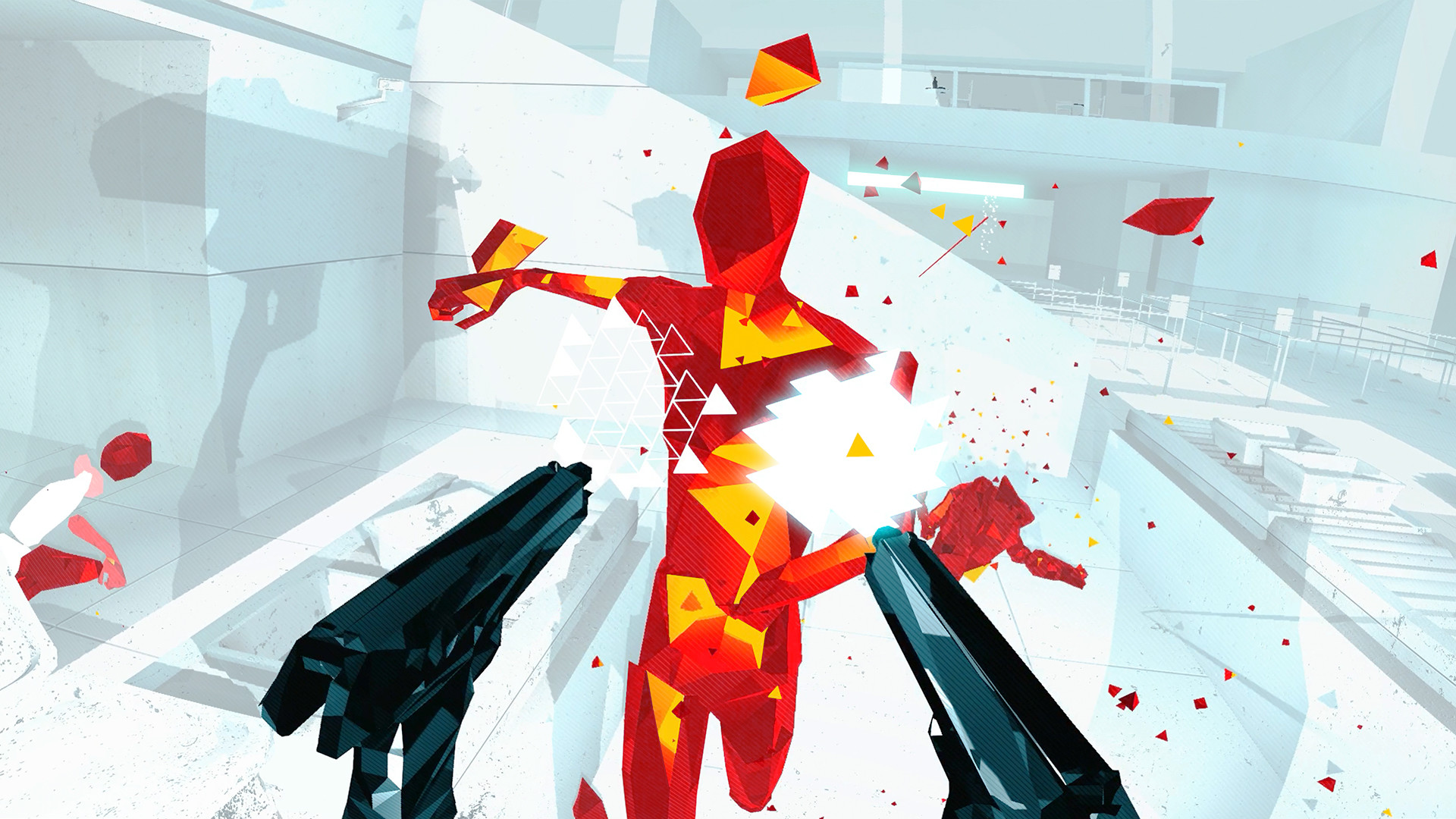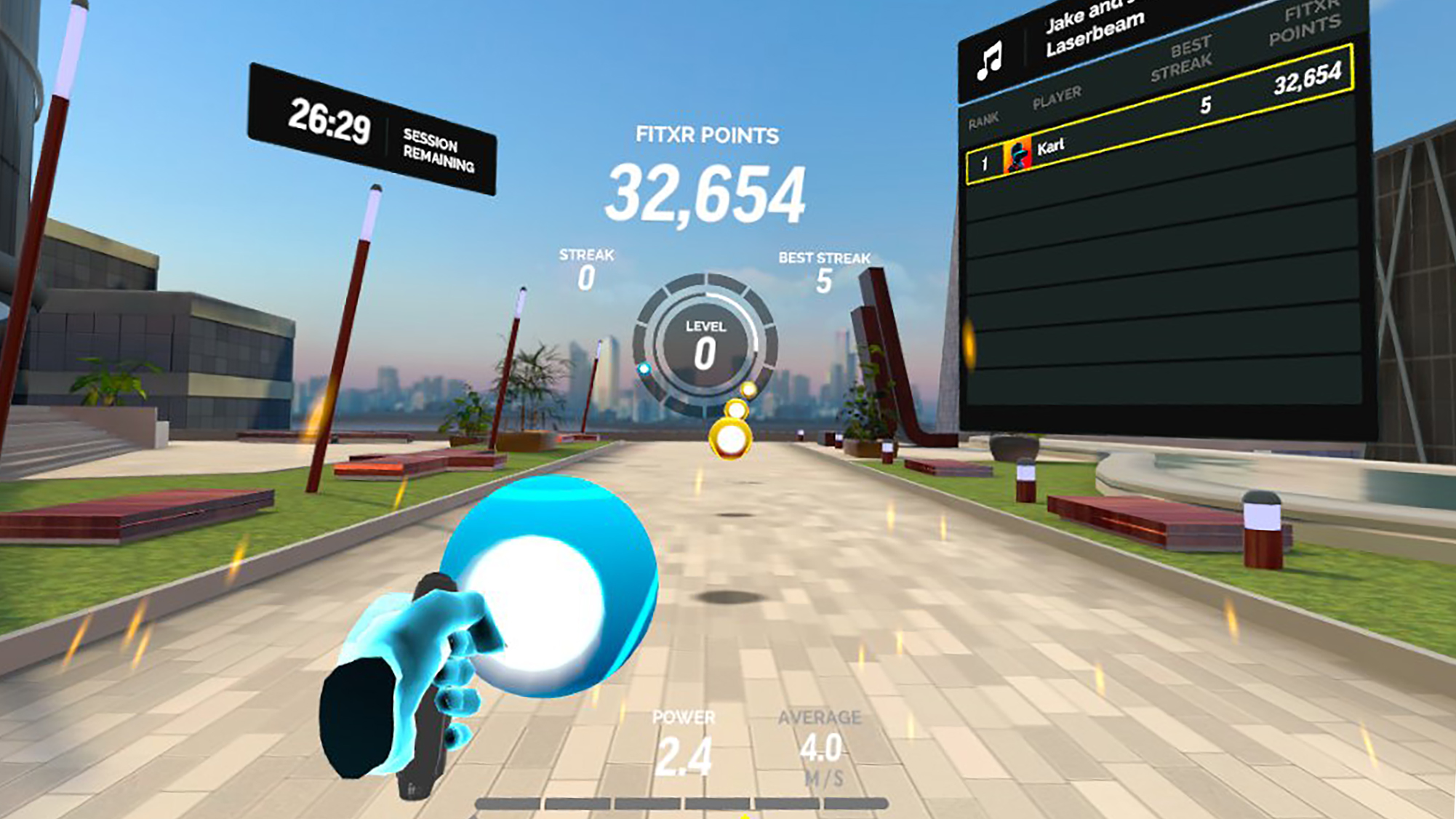The 8 best ways to get fit in VR
Burn calories while having fun, with these get-fit VR games

With the launch of the Oculus Quest 2, virtual reality continues its march into the mainstream. VR is now wireless and no longer requires a powerful PC to work.
A welcome side-effect of this freedom-of-movement is a boom in fitness applications. Virtual reality games are inherently more active to play than sedentary first-person shooters. Sure, an hour or so of Warzone can get the heart pumping, but it doesn’t get you moving. Play Beat Saber or FitXR for the same length of time, though, and you’ll need a shower and a lie down at the end of it.
We’ve been keeping fit in VR for a couple of years and tried almost every game there is. For us, these eight picks are the best combination of workout and play; VR games designed to bring the gym into your living room. All you need is a compatible headset and some space to jump around.
Unless we say otherwise, these games are available for older, tethered VR platforms (Valve Index, Windows Mixed Reality, Oculus Rift, HTC Vive) and for the Oculus Quest 1 and 2. Superhot VR, Beat Saber and Pistol Whip are also available for PSVR.

1. Superhot VR
- Price: £19.99
- Buy it here
Fans of Superhot know why it’s been a cult success since 2016. It’s a first-person shooter where time only moves when you move. Wave after wave of red enemies attack from all sides, with crowbars, swords and pistols, but the slow-motion mechanic makes strategy just as important as shooting. Every step and stab has to be carefully calculated, and every level rewards repeated play.
For all those reasons, Superhot translated fantastically to VR in 2017. What we didn't expect was the workout a Superhot VR session gives you. Ducking for cover, twisting and peeking around corners, punching bad guys and throwing knives... all these activities burn calories galore, when you have to repeat the same combinations over and over.
Superhot VR is a workout for the body and the mind, but best of all, it’s fun. It’s like you’re the star of John Wick IV.
Sign up for breaking news, reviews, opinion, top tech deals, and more.

2. Beat Saber
- Price: £23.49
- Buy it here
Beat Saber is a rhythm game, like Guitar Hero or Rock Band, but in VR. Coloured blocks fly at your face through a glossy sci-fi landscape, and you have to slash them in half with a pair of light sabres. You win extra points for clean cuts and hitting blocks to the beat. Though the soundtrack features Imagine Dragons, Green Day and even Korean boyband sensation BTS, we prefer the classic, original soundtrack. Nothing beats a bit of Czech techno for chopping up blocks.
You can stand still and swipe, or get your whole body involved for a full workout. An hour’s Beat Saber at that level easily matches the impact of a Zumba session at your local village hall. Once you’ve got the hang of Beat Saber you’ll find yourself racking up points without thinking, effortlessly pulling off combos that once seemed impossible. It makes you feel like a Jedi.

3. Pistol Whip
- Price: £19.49
- Buy it here
Frantic shooter Pistol Whip is a bit like Superhot and a bit like Beat Saber. Like Superhot, you have to dispatch wave after wave of faceless figures with a pistol (or pistols if you prefer a two-fisted approach). It has the same clean minimalism and cool level design too.
Like Beat Saber the targets move towards you; although in-game, you move towards them on a sort of virtual conveyor belt. You also score points for accuracy and hitting the beat.
There are other target-shooting rhythm games, but none encourage you to move quite so much. You’ll need to sidestep obstacles, crouch under beams and pick off armed assailants above and below, as well as directly ahead. Even a short session is an aerobic workout.

4. FitXR
- Price: £7.99 per month
- Buy it here
An Oculus Quest exclusive, FitXR started life as a Beat Saber-with-boxing clone called BoxVR, and boxing to the beat is still its core mechanic. With the name change and update came two other “gym class” modes. In “dance” mode, you have your own personal trainer in VR who leads you through energetic, aerobic routines. You score points for accurately mirroring their movements, and workouts really do get you moving.
The latest addition, HIIT (High-Intensity Interval Training) mode, is a combo of boxing and dance and the most “gamified” of the class types. Fast bursts of activity, where you punch at a grid of floating bubble “cues” as they light up, are punctuated with cool-down periods. You also need to duck, side-step and generally work up a sweat.
The app is the first in our round-up to have a subscription model, but the original BoxVR is still available for wired headsets from Steam and the PlayStation for a one-off payment.

5. Thrill of the Fight
- Price: £7.99
- Buy it here
We go up a couple of notches with Thrill of the Fight, a VR game that places you at the very beginning of a boxing career. You progress bout by bout, battling AI opponents to be crowned champion.
But that’s not all. You’re able to spar between fights with opponents less intent on punching you to mush – and there’s a virtual gym to help you hone your skills. If the latter was the only environment in the game, you’d still be able to get a decent workout with a speedball, a heavy punch bag or a grappling dummy.
The sparring and gym environments aren’t just there for show; you’ll need them to train your speed and reflexes. Prize bouts are so intense, with opponents so relentless, you’ll be left gasping for breath and sweating into your headset.
There are other VR boxing games, notably the movie tie-in Creed: Rise to Glory. But Thrill of the Fight takes the belt for gameplay and price-point. The only downside is that it’s not available for PSVR.

6. Eleven (Table Tennis)
- Price: £15.49
- Buy it here
While the other VR apps in this round-up are “just games”, Eleven is a bonafide table tennis simulator. Available on every platform except PSVR, It’s the closest most of us will ever get to playing at championship level.
On the one hand, the settings interface screams “indie developer”, with esoteric options and clunky design. On the other, gameplay is more fun than riding bareback on a giant, drunken labrador. With perfect gravity, sound synchronisation and physics, you feel like you’re playing table tennis. The environments are pretty too, with three realistic choices; a bijou apartment, a luxury chalet or a competition arena.
A solid, lifelike table contributes to a strong sense that you're actually there (though don’t try to lean on it). Online multiplayer enables you to take part in random matches, trounce friends or play in tournaments.
Eleven would be great if all you could do was play against AI components (which you can do). But MMO Table Tennis? It’s so immersive you don’t even notice you’re working out.

7. Holofit
- Price: £8.50 (€9.90) per month
- Buy it here
The main problem with stationary gym devices is that they’re stationary. That’s where Holofit comes in. It connects your headset to a rowing machine or a suitably modified stationary bike and puts you into VR as you row or ride.
No gym machine? No worries. A recent update also lets you “ski” around the same environments, using just your controllers.
The emphasis in Holofit is on fun rather than realism, so you can explore cartoonish Egyptian canals or scoot around the streets of an exaggerated Paris at twilight. You can even descend deep into fantasy mines and work out under the influence of (virtual) magic mushrooms.
It can be expensive to get going with Holofit. It works with all VR headsets except PSVR, and there’s even an Android version for mobile headsets. It’s best when coupled with a compatible gym machine, and the app itself is subscription-based. Overall though, it’s cheaper than a gym membership, and more fun than any spin class.

8. VZFit
- Price: £7.99 per month
- Buy it here
Oculus Quest-exclusive VZFit uses Google Street View to render running and cycle routes in VR. Want to jog through Death Valley without getting a sunburn? You can do that. Recreate the marathon route from the 2021 Olympics? That too. VZFit works with stationary bikes fitted with a cadence sensor, or you can just swing the Quest 2’s controllers and workout on the spot. No fancy equipment is needed.
There are aspects of VZFit’s execution that don’t quite live up to its premise. It’s a little slow to load and we’ve seen prettier interfaces. If you stray from curated routes, then the directions are not always perfect and – like Holofit – you need to pay a monthly subscription.
Still, VZFit feels like it’s bursting with potential and with frequent updates, it’s one to keep an eye on. One tip: though the small print says a subscription is required, there is a “free ride” that changes every month.
Our pick
Working out in VR is always going to have limitations. Some of those limitations are shared with all VR games; the space to move around is the most common. That’s why Beat Saber is an easy recommendation. A sustained session with good form is equivalent to any gym class and ten times the fun, and most of it is standing in place.
If you’re looking for a full-body workout, then Holofit is the go-to. In truth, Holofit doesn’t give you a workout: the gym machine it’s connected to is responsible for that. It’s a clever distraction that occupies the mind as you exercise the body.
If we could only play one VR fitness game for the rest of our lives, it would be tough to choose between Beat Saber and Holofit, but we’re going to pick Beat Saber, purely on cost. We only had to pay for Beat Saber once, while Holofit’s monthly subscription exercises the wallet as well as the deltoids.
- Check out the best VR headsets, and the best VR games to play on them